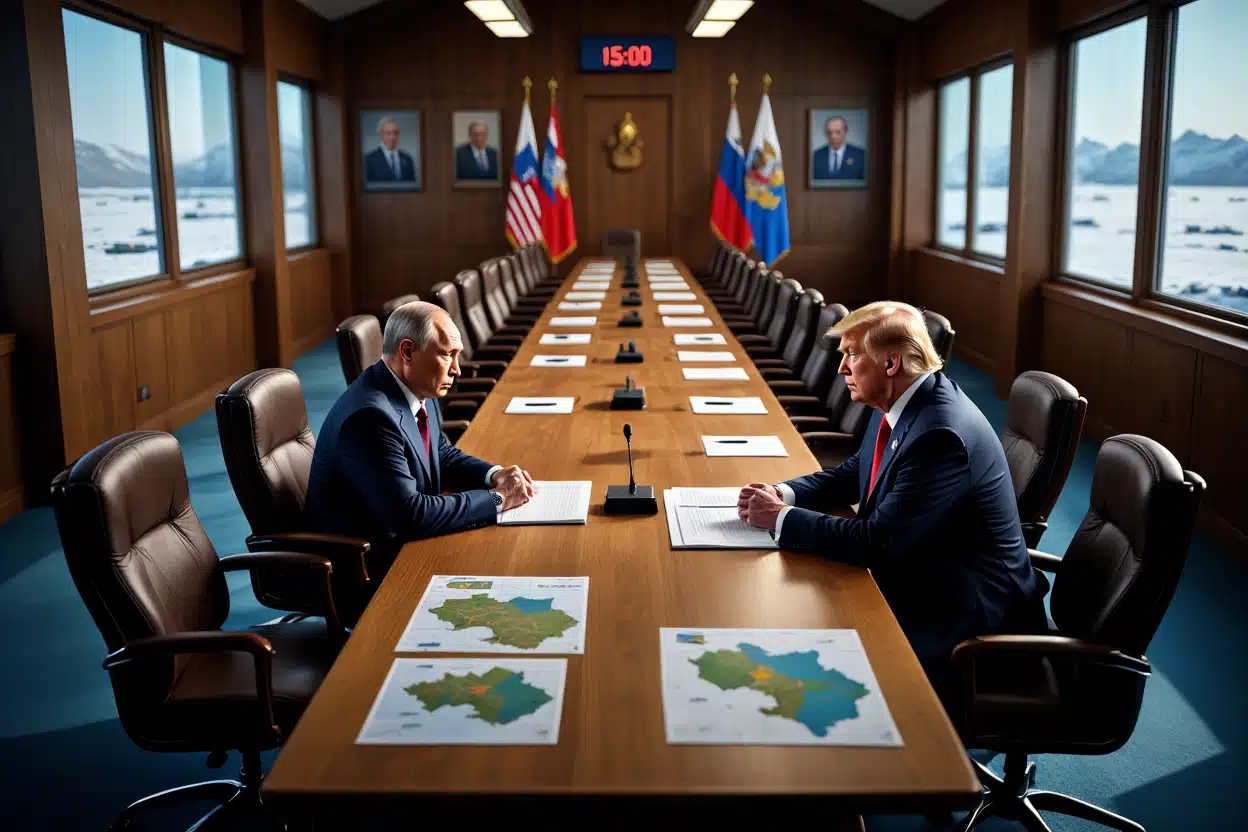A whirlwind 48 hours reshaped President Donald Trump’s latest Ukraine peace bid. After envoy Steve Witkoff’s Aug. 6 Moscow meeting, Trump heard that Vladimir Putin might offer significant territorial concessions—a dramatic turn that set off calls with allies and a fast-tracked Aug. 15 Alaska summit. But Witkoff’s account appeared to change, startling Europeans and sowing uncertainty. With no deal in Alaska, and a new Russian missile-and-drone onslaught—the war’s second-biggest Kyiv bombardment—momentum faltered. Here’s how the timeline, decisions, and reactions add up—and what could come next this week.
Need to know
• Witkoff meets Putin on Aug. 6; relays possible territorial concessions to Trump.
• On Aug. 7–8, Witkoff’s account shifts, startling allies and fueling confusion.
• Aug. 15 Alaska summit ends without a peace deal; ceasefire not required.
• Aug. 18 meeting with Zelenskiy, Europeans agrees to draft security guarantees.
• Aug. 28: Russia launches Kyiv’s second-biggest bombardment, undercutting talks.
Why a 48-hour flip on Ukraine talks matters today for allies
TubiTV Just Hit 200 Million Users – Here’s Why
10 Perfect-Score Shows Buried on Prime Video Right Now
The rapid swing between a sweeping “land swap” impression and a softer readout spooked European capitals and complicated U.S. coordination. It showcased Trump’s reliance on confidants over traditional process—Witkoff met without a State Department notetaker—leaving no official record and widening interpretive gaps. As Aug. 28 strikes pounded Ukraine, the costs of misreads grew: allies need clarity to align pressure on Moscow, while mixed signals risk emboldening the Kremlin and alarming Kyiv.
Voices and reactions
Supporters tout speed and breakthrough instincts; critics warn of confusion and leverage loss. Former NATO ambassador Kurt Volker said, “We are just exactly where we were before Trump took office… We don’t have a clear strategy.” The White House’s Anna Kelly argued Trump made more progress “in two weeks” than his predecessor did in “three-and-a-half years.”
The 'land swap' that wasn't: Inside Trump's frantic dash for Ukraine peace https://t.co/HTALd4NRfv https://t.co/HTALd4NRfv
— Reuters (@Reuters) August 28, 2025
What the Aug 6–15 timeline reveals about Trump’s process
The $3.99 Streaming Service With 500+ Oscar Winners Nobody Knows About
Cancel These 3 Subscriptions Before November 1st – Here’s Why
A compressed timeline—Moscow meeting on Aug. 6, allied calls Aug. 7–8, Alaska summit Aug. 15—spotlights a seat‑of‑the‑pants approach. Witkoff’s initial claim that Putin might leave Zaporizhzhia and Kherson in exchange for Donetsk and Luhansk alarmed allies; the next day’s softened account deepened doubts. After Alaska, Trump signaled a ceasefire was not a precondition—aligned with Putin’s stance, not most Europeans’—even as Washington and Europe on Aug. 18 agreed to draft security guarantees for Ukraine.
The numbers that change the game
Measure Result Date/Region Impact Witkoff Moscow readout Claimed major concessions on 2 regions Aug 6–7, 2025 Triggered rapid summit planning Account shifts No withdrawal offer confirmed Aug 8, 2025 Shocked allies; muddied leverage Trump–Putin summit No deal; ceasefire not precondition Aug 15, 2025, Alaska Raised European concern Kyiv bombardment rank 2nd-largest of the war Aug 28, 2025, Kyiv Undercut peace momentum Security guarantees Drafting contours agreed Aug 18, 2025, Washington Renewed U.S.–EU coordination Meeting protocol No State Dept notetaker Aug 6, 2025, Moscow No verbatim record; confusion risk
Summary: Fast moves, shifting accounts, and fresh strikes eroded negotiating clarity.
A split over ‘land swap’: Europe’s worry vs. Trump’s instinct
European officials publicly praised engagement but privately feared Kyiv might be pushed toward painful concessions. U.S. officials fretted that Witkoff’s inexperience at the table could be exploited. Trump allies counter that unconventional channels opened doors—from the Putin line to talks on security guarantees—that conventional diplomacy struggled to unlock. The divide: speed and instinct versus process and unity.
Missed Aug 8 deadline, new pledges on Aug 18—what’s at risk now
Before Moscow, the administration signaled fresh sanctions or tariffs by Aug. 8 if Putin balked— a deadline that passed. That perceived lull may have softened pressure even as Aug. 18 brought a pledge with Europeans to draft Ukraine’s security guarantees. Moscow, meanwhile, said it won’t accept guarantees that place foreign troops in Ukraine. The stakes: maintaining allied leverage while avoiding concessions that reward aggression.
What voters should watch next week: statements, calls, pressure
Watch for a White House statement following the Aug. 28 strikes and continued allied calls on roles within Ukraine’s future security guarantees. Key questions: Will Washington tighten economic pressure, and can U.S.–EU unity harden Moscow’s calculus? With battlefield tempo rising, timing—and clarity—could determine whether talks regain momentum or stall into autumn.
Sources
- https://www.reuters.com/world/europe/land-swap-that-wasnt-inside-trumps-frantic-dash-ukraine-peace-2025-08-28/
- https://www.reuters.com/world/europe/white-house-says-trump-not-happy-with-russia-strike-ukraine-make-statement-later-2025-08-28/
- https://www.reuters.com/world/trump-says-great-progress-made-envoy-witkoffs-meeting-with-putin-2025-08-06/
Similar posts:
- Russian missiles pound central Kyiv; EU/UK offices hit, 18+ dead
- Rare central Kyiv strike kills 15, injures 48 as Russia launches 629 attacks
- Nostradamus’ 2025 predictions show eerie accuracy with Ukraine war funding crisis
- Why Woody Allen’s Aug 2025 Moscow Call Sparked Diplomatic And Cultural Fury
- He Clearly Speaks And Understands More English Sparks Late-Night Debate In 2025 – What Changes

Jessica Morrison is a seasoned entertainment writer with over a decade of experience covering television, film, and pop culture. After earning a degree in journalism from New York University, she worked as a freelance writer for various entertainment magazines before joining red94.net. Her expertise lies in analyzing television series, from groundbreaking dramas to light-hearted comedies, and she often provides in-depth reviews and industry insights. Outside of writing, Jessica is an avid film buff and enjoys discovering new indie movies at local festivals.

